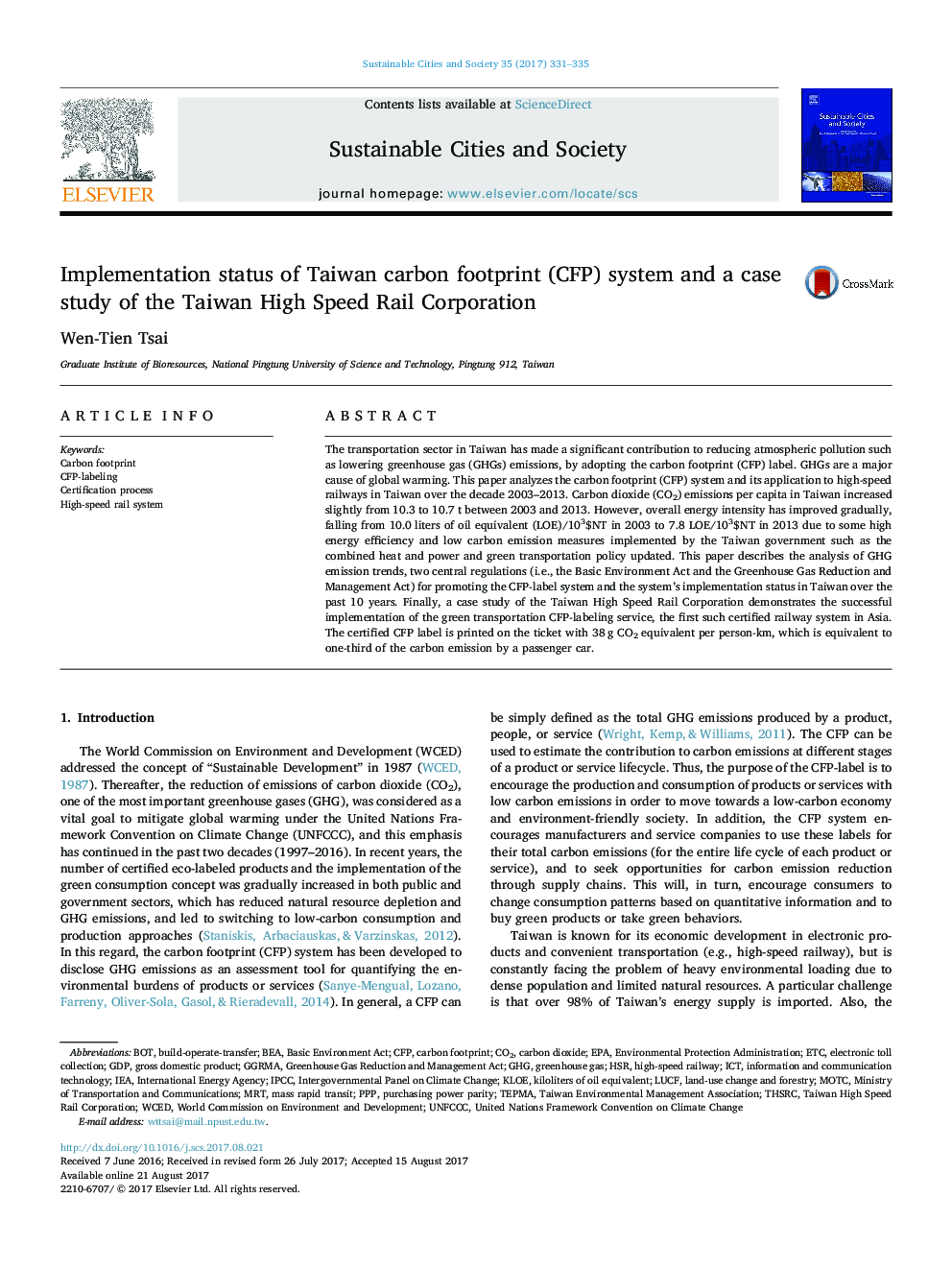| Article ID | Journal | Published Year | Pages | File Type |
|---|---|---|---|---|
| 4928098 | Sustainable Cities and Society | 2017 | 5 Pages |
Abstract
The transportation sector in Taiwan has made a significant contribution to reducing atmospheric pollution such as lowering greenhouse gas (GHGs) emissions, by adopting the carbon footprint (CFP) label. GHGs are a major cause of global warming. This paper analyzes the carbon footprint (CFP) system and its application to high-speed railways in Taiwan over the decade 2003-2013. Carbon dioxide (CO2) emissions per capita in Taiwan increased slightly from 10.3 to 10.7Â t between 2003 and 2013. However, overall energy intensity has improved gradually, falling from 10.0Â liters of oil equivalent (LOE)/103$NT in 2003 to 7.8 LOE/103$NT in 2013 due to some high energy efficiency and low carbon emission measures implemented by the Taiwan government such as the combined heat and power and green transportation policy updated. This paper describes the analysis of GHG emission trends, two central regulations (i.e., the Basic Environment Act and the Greenhouse Gas Reduction and Management Act) for promoting the CFP-label system and the system's implementation status in Taiwan over the past 10 years. Finally, a case study of the Taiwan High Speed Rail Corporation demonstrates the successful implementation of the green transportation CFP-labeling service, the first such certified railway system in Asia. The certified CFP label is printed on the ticket with 38Â g CO2 equivalent per person-km, which is equivalent to one-third of the carbon emission by a passenger car.
Keywords
HSRWorld Commission on Environment and DevelopmentWCEDKLOEBEAEnvironmental Protection AdministrationCFPMRTEPAPPPUNFCCCIPCCIEAGHGInternational energy agencyBOTpurchasing power parityMass Rapid TransitGross domestic productGDPCarbon dioxideHigh-speed railwayCarbon footprintBuild-operate-transferInformation and Communication TechnologyICTElectronic toll collectionIntergovernmental Panel on Climate ChangeETcCO2United nations framework convention on climate changeGreenhouse gas
Related Topics
Physical Sciences and Engineering
Energy
Renewable Energy, Sustainability and the Environment
Authors
Wen-Tien Tsai,
